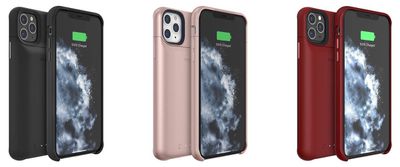Apple's services business is set to grow by 20 percent next year, boosted by its forthcoming Apple TV+ streaming service, according to the latest predictions by Morgan Stanley analyst Katy Huberty (via CNBC).

In a new investor note, Huberty predicts that Apple TV+ will grow into a $9 billion business by 2025, despite increasing competition in the streaming market and even if only 1 in every 10 Apple user subscribes to the service:
"With an attractive price point at $4.99/month, and wide initial distribution to the Apple installed base via the bundled free year offer, we estimate Apple TV+ can become a $9B revenue business with 136M paid subscribers by FY25, assuming just 1 in every 10 Apple user pays for the Service by FY25."
Huberty also notes that for Apple TV+ to have a more material impact on its near term estimates, Morgan Stanley would have to assume: "1) Apple TV+ production costs are significantly higher at the launch of the Service, and/or 2) more users redeem the Apple 12 month free offer with the purchase of a device."
Launching on November 1, Apple TV+ costs $4.99 per month and will be available on the Apple TV app on iPhone, iPad, Apple TV, iPod touch, Mac and other platforms, including online via www.tv.apple.com. Customers who purchase any new iPhone, iPad, Apple TV, Mac or iPod touch starting September 10, 2019, are eligible for one year of Apple TV+ for free.
Morgan Stanley also raised its target price for Apple stock from $247 to $289. That works out as a 17 percent increase based on its outlook for Apple TV+, as well as its prediction that sales will return "to growth as replacement cycles peak" in 2020 as users upgrade to Apple's 5G-enabled iPhones.

















 Note: MacRumors is an affiliate partner with Amazon. When you click a link and make a purchase, we may receive a small payment, which helps us keep the site running.
Note: MacRumors is an affiliate partner with Amazon. When you click a link and make a purchase, we may receive a small payment, which helps us keep the site running.




 Mozilla has launched
Mozilla has launched 












